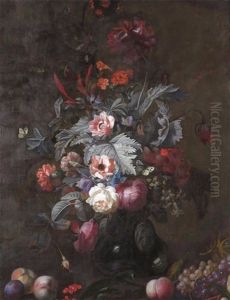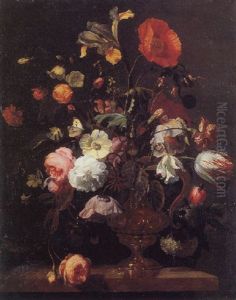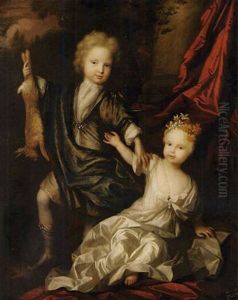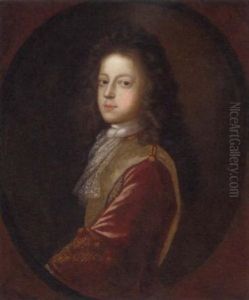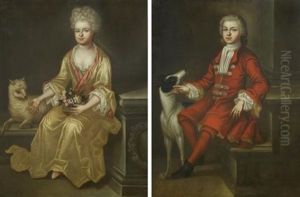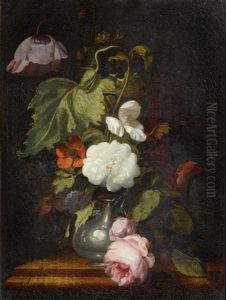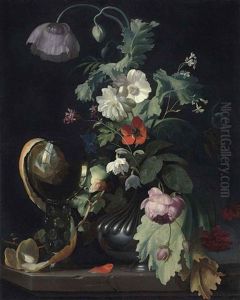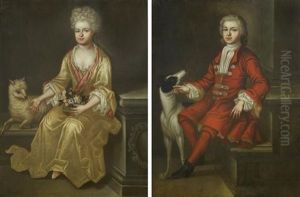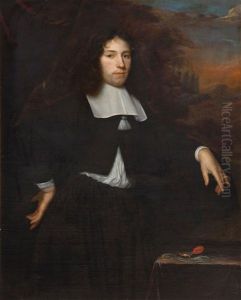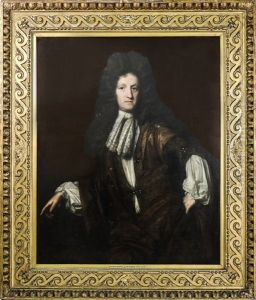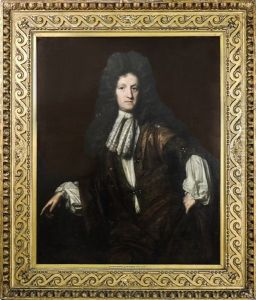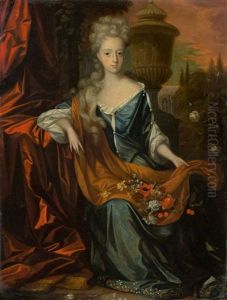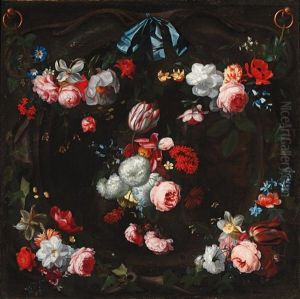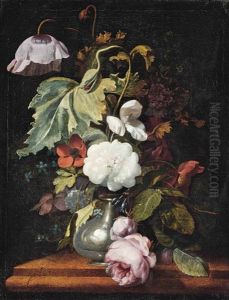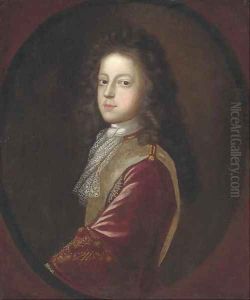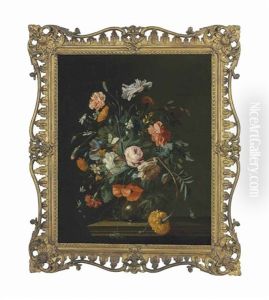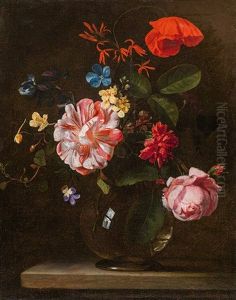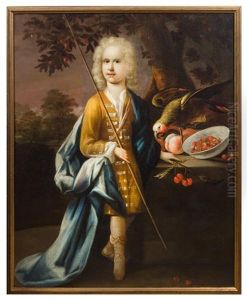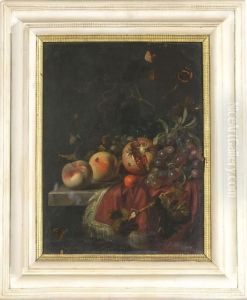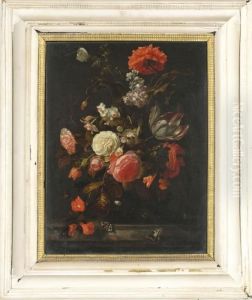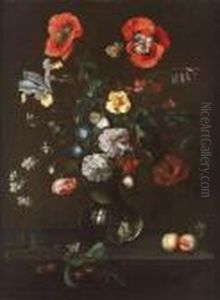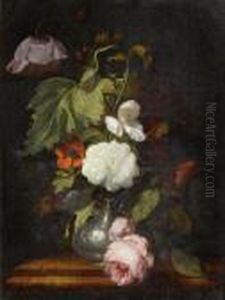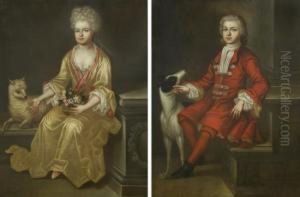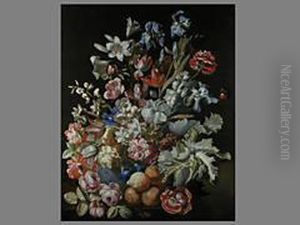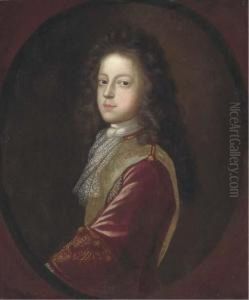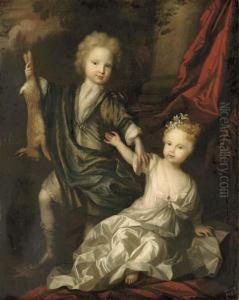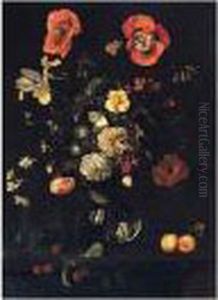Herman Verelst Paintings
Herman Verelst was a Dutch Golden Age painter, born in 1641 in the Netherlands. He was part of the Verelst family of painters, which included his father Pieter Hermansz Verelst, and his brothers Cornelis and Simon, all of whom were also artists. Herman was known for his exquisite flower paintings and portraits.
Herman initially trained under his father, who was a still-life painter, and later worked with his brothers in their shared workshops. Early in his career, Herman developed a style characterized by detailed and realistic depictions of flowers, often arranged in ornate vases or wreaths. His compositions were carefully constructed, with attention paid to the interplay of light and shadow, which added depth and vibrancy to his subjects.
In the latter part of the 1660s, Herman Verelst moved to London, England, where he spent the majority of his career. His talent for portraiture was recognized by the English aristocracy, and he became a sought-after portraitist. He painted portraits of several important figures of the time, including King Charles II. His English portraits are noted for their elegance and for the way they capture the opulence of the Restoration court.
Verelst's work was well received, and he achieved a degree of fame and financial success during his lifetime. His portraits were particularly appreciated for their lifelike quality and the rich details of the subjects' attire. Despite his success, little is documented about his personal life in England, and much of what is known about Herman is derived from his body of work.
Herman Verelst died in 1690 in London. Although not as widely recognized today as some of his contemporaries, his work remains an important part of the Dutch Golden Age painting tradition, and his portraits and flower pieces are held in various museum collections. They continue to be studied for their technical skill and historical value in representing the artistic and cultural milieu of his time.
